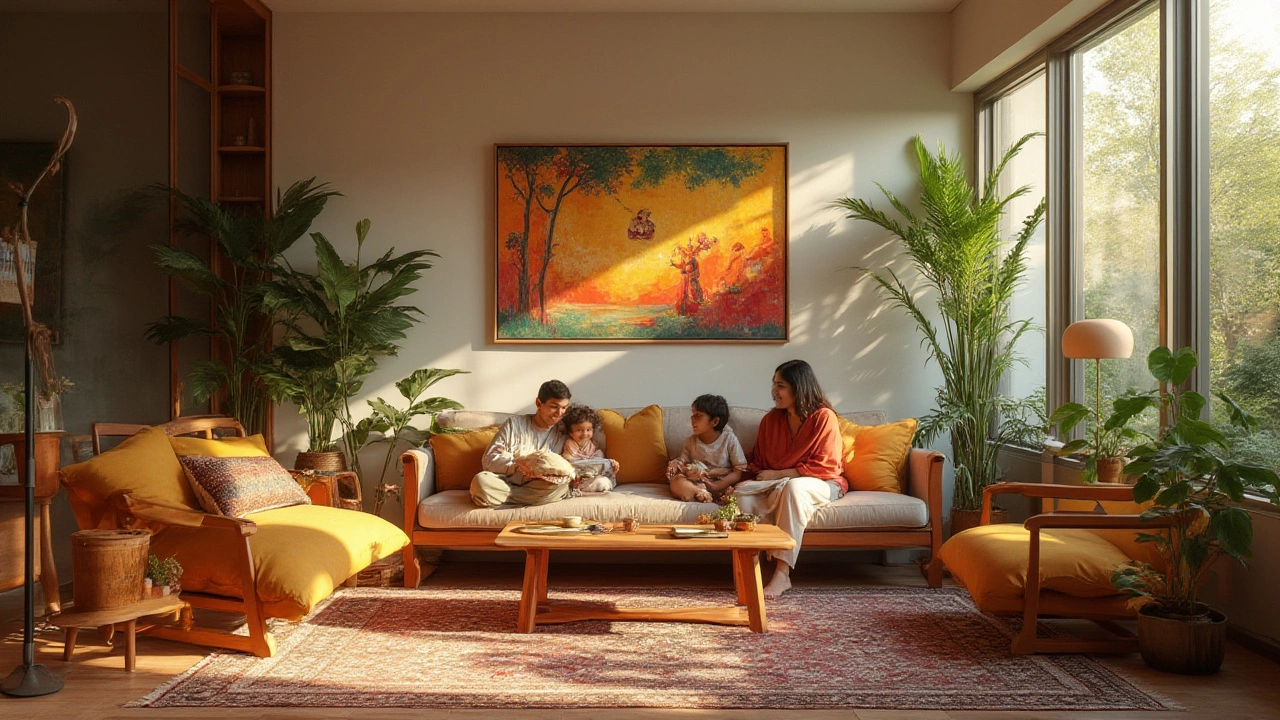Balance in Interior Design: Quick Tips to Make Every Room Feel Right
Ever walk into a room and feel like something’s off, even though you can’t name it? That uneasy feeling usually means the space lacks balance. Balance is simply about spreading visual weight so the eye feels comfortable. When you get it right, a room looks calm, inviting, and put‑together.
Start With Symmetry or Asymmetry
There are two main ways to balance a room. Symmetrical balance puts matching items on each side of an imagined line – think two matching chairs flanking a sofa. It’s safe, classic, and works great in formal spaces. Asymmetrical balance is a bit more relaxed. Here you pair different pieces that together equal the visual weight – a tall lamp on one side and a low bookshelf on the other. The key is to keep the overall mass similar, even if the objects differ.
Play With Color and Texture
Color can be a heavyweight. Dark hues draw the eye, while light shades recede. If you have a dark sofa, add lighter cushions or a pastel rug to pull the focus outward. Textures work the same way – a rough stone wall feels heavier than a smooth wood floor. Mix smooth and textured pieces to spread the feel across the space.
Don’t forget pattern. A bold rug can balance a plain couch, but too many patterns clash. Pair a patterned item with solid pieces that pick up one color from the pattern. That ties everything together without overwhelming the eye.
Mind the Scale and Proportion
Big furniture in a tiny room throws off balance fast. Measure your floor space and choose pieces that fit the room’s scale. A massive sectional in a small living room will dominate, leaving little room to breathe. Instead, opt for a medium‑sized sofa and add a couple of accent chairs. The extra seating adds function without crushing the space.
When you add accessories, think size too. A tiny vase on a huge coffee table looks lost, while a huge sculpture on a petite side table feels clumsy. Aim for a 1:3 ratio – the accessory should be about a third of the surface it sits on.
Use Negative Space as a Balance Tool
Empty space isn’t empty; it’s a design element. Leaving breathing room around furniture lets each piece stand out and keeps the room from feeling crowded. If a wall is packed with shelves, balance it by leaving the opposite wall free of large items. The void on one side offsets the visual weight on the other.
Lighting Helps Even Out the Look
Light can shift visual weight dramatically. A bright lamp on a dark corner lifts that side, making the room feel evenly lit. Use floor lamps, table lamps, or wall sconces to spread light across the space. When light is balanced, the room feels cohesive.
Finally, step back and look at the room from different angles. Walk around, look from the doorway, and even take a photo. If one side still feels heavier, swap a piece or add a small element to the lighter side. Small tweaks often make the biggest difference.
Balancing a room isn’t about strict rules; it’s about feeling comfortable with what you see. Use these practical tips, experiment a bit, and you’ll notice how quickly a space can go from “meh” to “wow.”
Golden Rule of Interior Design: The Key to a Perfect Home Layout Explained
Ever heard of the golden rule in interior design? Get the inside scoop on how this secret shapes your home's vibe. Find actionable, practical tips for your own space.





